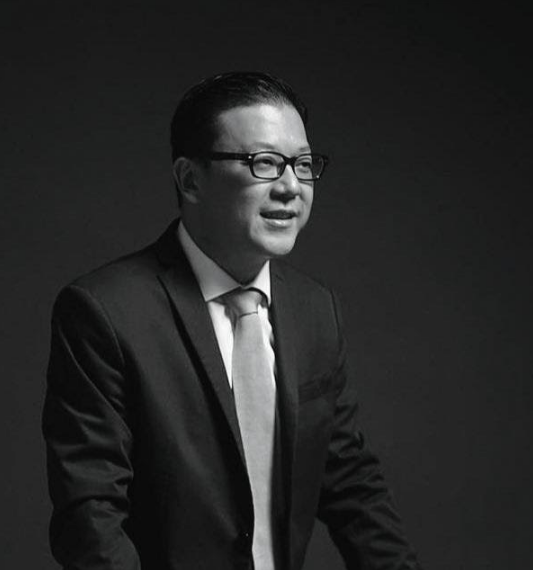Tom Tandio: “Artists changed my life”
The art collector and Art Jakarta Fair Director talks pivoting from his business background into his far-reaching influence in Jakarta’s art scene.
Text written by Khyne Palumar
Images courtesy of Tom Tandio and Art Jakarta
March 7, 2023
Art Jakarta Fair Director Tom Tandio
Indonesia-born Tom Tandio ran an automotive business before he stumbled into collecting contemporary art—a pursuit he’s taken on for some 12 years running. Tandio’s far-reaching influence in Jakarta’s vibrant art scene includes forming Indo Art Now in 2011, helming six fairs when he was a regional director of Art Stage Jakarta between 2014 to 2018, and currently being on his fifth year as fair director of Indonesia’s oldest contemporary art fair: the recently concluded Art Jakarta. Alongside Art Jakarta, Tandio also helms Art Jakarta Gardens, an art fair which combines an indoor and outdoor presentation.
The 41-year-old grew up in Singapore where he studied business and focused on “efficiency and profit margins,” he says. But through a happy accident in 2011, he visited a gallery event hosted by his sister-in-law, where he purchased his first three artworks. The acquisitions piqued his business instincts, encouraging him to learn more about the potentially lucrative art market. “I couldn’t understand why the price goes up so fast and so high. I decided to find out more about what’s going on,” he says. Tandio took a crash course from the city’s collectors and curators—taking time to speak with artists and writers to get a better pulse on the scene.
“I started hanging out with the artists, and after quite some time of getting drunk together, I realized that apparently a lot of artists make art not for money, but because of something they want to express,” Tandio says. “That actually changed the way I see myself, how I want to live my life, and what life means to me.” This epiphany spurred the entrepreneur to start Indo Art Now—a foundation focused on supporting the country’s many talented artists and their varied, vibrant works.
Unlike in Manila, however, Tandio notes that Indonesia has fewer exhibition spaces, and the government’s support for art programs and the creative industry could be far better. But Indonesians have quickly risen above such hurdles: “We have so many artists and we do not have enough galleries—it’s become very organic where a lot of artists have artist’s spaces and art collectives, and a lot of young people are trying to set up galleries in Indonesia. When you have more galleries, it means more artists are represented,” Tandio says. “I must say, the Indonesian art scene is exciting, organic, and also very collective.”
Tandio likes to think of art as universal instead of geographical—he believes context and lived experience is what distinguishes Indonesian artworks and their artists. “In contemporary art, we no longer think of it as Indonesian art or Philippine art—we’re all in one scene where we try to compete in terms of the intellectual concept or context of the artist’s works. [What’s worth] talking about is the context of Indonesian artists living in Indonesia,” he says.
“We’re one of the oldest countries in Southeast Asia, but we’re also one of the messiest ones too,” Tandio admits, citing the communist mass killings and political unrest that happened between 1965 to 1966, and 1998. “It’s always through this turmoil in terms of economy and society that these artists get a lot of experience that they can share. I think a lot of artists based in Indonesia used to have a lot of political issues in terms of context,” he says. Tandio observes that younger artists have supplanted political statements with social commentaries on the rich versus the poor. “Indonesia is unstable and it has a lot of problems so artists always have a lot of things to talk about.”
Speaking on which types of art personally resonates with him: “true art- works and true artists try to share new ideas and change perspectives,” he says. “Art changed the way I see life and how I wanted to achieve things. It’s no longer just about money or profit but more meaningful things that would make my life more meaningful too. That is the greatest reason why I want to be part of the art world and contribute to the art scene.”
Tandio contemplates about Indonesian artists: “They changed my life.”


